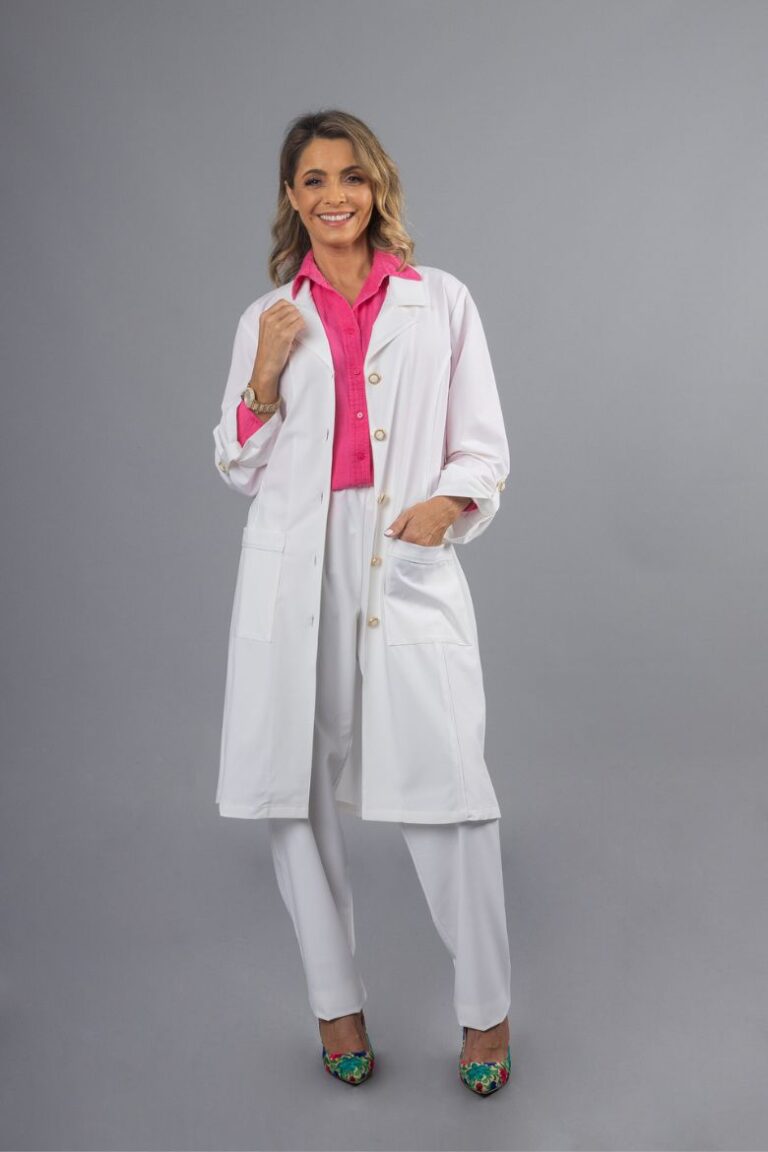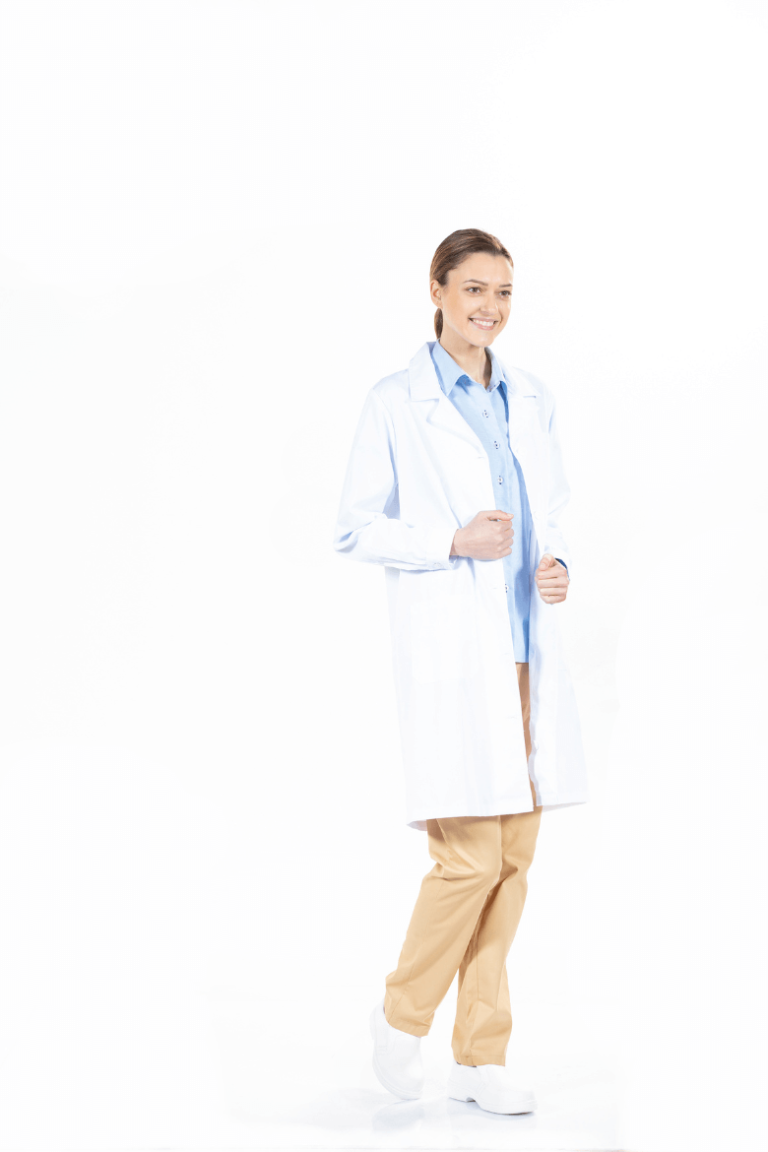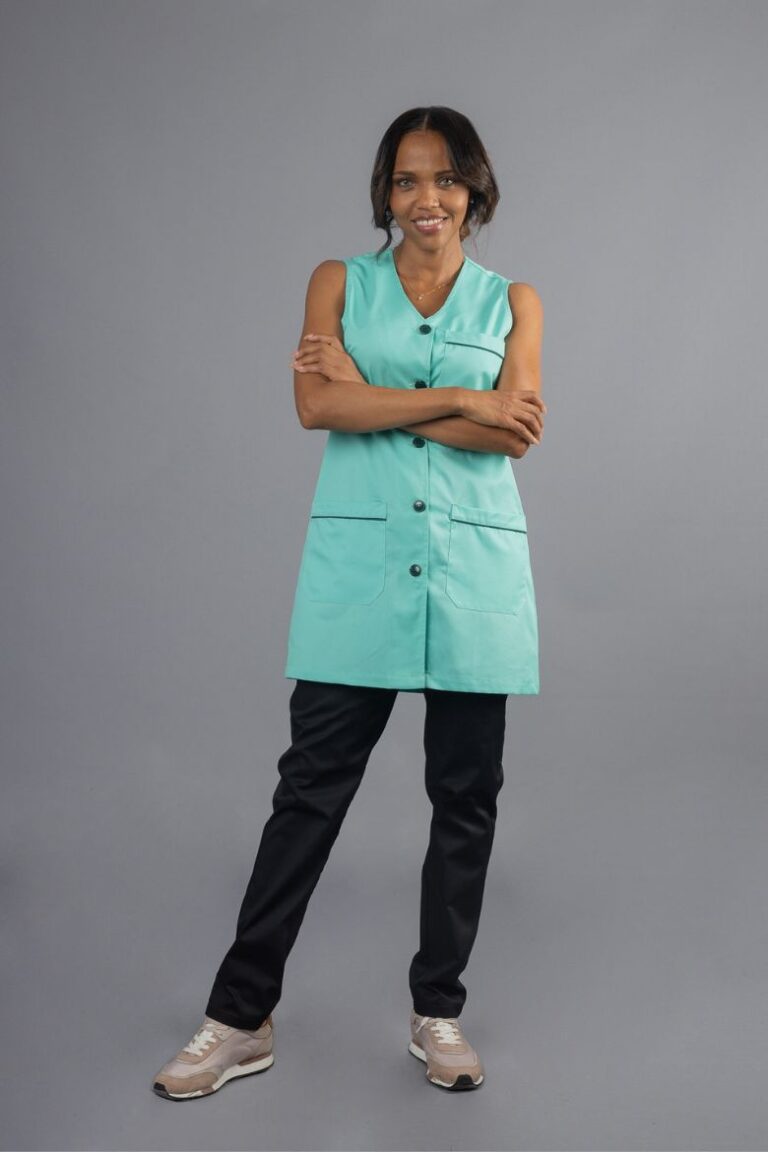

















Products with visible prices are those that can be purchased immediately, online, without requiring minimum purchase quantities. This means you can explore our variety of options and purchase exactly what you need, with complete transparency regarding costs and the Professional Apparel model. On the other hand, products without a listed price function as a portfolio of possibilities. These items are highly customizable and can be tailored to each customer's individual specifications. To ensure quality and meet expectations, these products have a minimum order quantity and are subject to a custom quote process.
Work coats are widely used in industry, various healthcare sectors, and services such as cleaning, among many other fields. This is because, in addition to protecting users, they help create a strong corporate identity for the company they work for. For health and safety reasons, many industries choose to provide their employees with work coats. This type of clothing perfectly adapts to the tasks to be performed within each company. However, it is important to carefully choose the right work coat, as it is essential to understand the context in which this professional garment will be used. The primary function of work coats is to protect employees, but they also effectively unite the team and promote the company's or brand's image. In the past, the main function of work coats was to protect employees from dirt, toxic materials, and even possible burns. Today, this remains their primary function, but with a higher and more effective level of protection. In fact, today's most suitable work coats offer users exceptional safety against security, health, and climate risks. Additionally, there are now various European standards that aim to introduce the use of workwear in each sector. Currently, this requirement applies to areas of activity that are subject to higher risks. Thanks to the use of Personal Protective Equipment (PPE), employees benefit from comfortable, practical, and durable clothing that ensures ideal protection. It should be noted that PPE does not only refer to clothing but also includes protection for the feet, hands, eyes, head, and respiratory tract. Other benefits that the use of work coats offers to your company's employees include: Prevents Damage to Clothing: The use of work coats prevents employees from damaging or staining their work clothes. Practical and Functional: It is a practical and functional piece of clothing that allows employees to perform their tasks comfortably and with ease of movement. Convenient Storage: The presence of various pockets on work coats facilitates the storage and transport of small work objects. Durability: Most work coats are made from durable materials. Easy to Use: They are easy to put on and take off, reducing the risk of accidents.
Anti-static workwear is a cornerstone in many work environments. Anti-static trousers and coats can be essential for protecting both workers and the equipment they use. Electrostatic discharge (ESD) can damage sensitive electrical equipment and cause fires and even explosions. These damages can result from a spark caused by the release of electrostatic energy. Whenever there is the possibility of electrostatic phenomena or work involving flammable materials, including solvents and paints, it is essential to wear anti-static workwear designed to prevent these electrostatic discharges. Industries, professions, and operations that may adopt this type of workwear include: • Electricians • Engineering • Electronics • Mechanics • Component Handling • Hardware • Automation • Handling of Electronic Materials Employees of a company should wear anti-static workwear and ESD shoes if they work in these hazardous environments, such as a refinery. These Anti-Static Work Coats can be used in any industry involved with petrochemical products, pharmaceuticals, gas, fuel, or electrical components. Whether your team works with electricity directly or indirectly, friction between surfaces and standard clothing can cause a build-up of static electricity. This alone is enough to create a spark or cause a static shock. Therefore, wearing Anti-Static Work Coats and other garments with these characteristics is fundamental. Anti-Static Workwear that protects your company’s employees against electrostatic discharges is specifically designed to prevent static charges from transferring from a person or their clothing to the surrounding area. These garments should be worn whenever static damage is a concern, which is a common practice in various sectors. Anti-Static Work Coats and footwear are the most commonly used items in these controlled environments. The main raw materials used in anti-static fabrics are essentially sub-conductive fibers and anti-static synthetic fibers, which allow static electricity generated by friction to be quickly released. These materials are blended with mixed fabric or polyester/cotton to create an anti-static fabric. This same fabric can be used to manufacture anti-static coats.
The uniform of cleaning industry workers, in addition to being suitable for the tasks they perform, can offer numerous advantages for both the employees and the company. Hygiene, safety, and comfort must be the priority. The importance of having appropriate uniforms, and specifically work coats for cleaning, is increasingly becoming a key point. However, deciding which uniforms are most suitable to implement is not always an easy task. When a company modifies or implements a workwear policy, several challenges naturally arise. On one hand, it is necessary to gain the support of employees, not only in the selection of the workwear but also in the subsequent care of the clothing. Employees must also be made aware of the importance of all the safety and hygiene standards related to the workwear. Key Considerations for Choosing Cleaning Work Coats: Employee Comfort: Work coats should offer maximum comfort, with easy-to-wash fabric that is specially developed for cleaning tasks. Features such as sleeves that facilitate arm and shoulder movements and durable fabric that ensures good mobility are crucial. Material: Easy to Clean: Choose fabrics that are easy to wash and maintain, ensuring they remain hygienic and presentable. Durable: The fabric should be resistant to wear and tear, capable of withstanding frequent washing and the rigors of cleaning tasks. Breathable: To ensure comfort, the fabric should be breathable, especially for workers performing physically demanding tasks. Design and Fit: Practical Design: Coats should have a practical design, including features like multiple pockets for carrying tools and cleaning supplies. Proper Fit: Ensure the coats fit well, allowing for ease of movement and flexibility during cleaning tasks. Safety and Hygiene: Protective Features: Work coats should protect employees from potential hazards such as chemicals and cleaning agents. Compliance: Ensure the uniforms comply with industry safety and hygiene standards. Employee Involvement: Feedback: Involve employees in the selection process to ensure their needs and preferences are considered. Education: Educate staff on the importance of maintaining and caring for their uniforms, emphasizing hygiene and safety standards. Company Branding: Professional Appearance: Work coats should present a professional image, contributing to the company’s reputation. Customization: Consider adding company logos or employee names to the uniforms for easy identification and enhanced corporate identity. Benefits of Implementing Suitable Work Uniforms: Enhanced Safety: Appropriate uniforms reduce the risk of accidents and injuries, providing protection against chemicals and other hazards. Improved Hygiene: Proper work coats help maintain a clean and hygienic environment, essential in the cleaning industry. Employee Morale: Comfortable and practical uniforms can boost employee morale and job satisfaction, leading to increased productivity. Professional Image: Uniforms contribute to a cohesive and professional appearance, enhancing the company’s image. By carefully considering these factors, companies can choose the most suitable work coats for their cleaning staff, ensuring a balance between safety, comfort, and professionalism.
Work coats are essential pieces of professional clothing designed to ensure safety, hygiene, and identification in various professions. Whether used in healthcare, laboratories, or industrial environments, these garments protect both the worker and the materials they handle, minimizing contamination risks and promoting a professional image.
Work coats serve as a protective barrier, shielding workers from harmful substances such as chemicals, contaminants, and hazardous materials. In industries like healthcare and food production, they also help maintain hygiene by preventing cross-contamination between workers and their environment.
Work coats come in various styles and designs to suit the specific needs of different professions. Common features include:
Customized work coats, often branded with a company logo or employee name, make it easy to identify staff and their roles. In healthcare, a white coat is instantly recognizable as a symbol of trust and professionalism, conveying authority and competence.
In the medical field, work coats are synonymous with hygiene, protection, and trust. Doctors, nurses, pharmacists, and other healthcare professionals wear them to prevent contamination and ensure a clean working environment. White coats, in particular, offer symbolic reassurance to patients while repelling heat in clinical settings.
Work coats in the food industry prioritize hygiene and practicality. Typically designed with snap cuffs and interior pockets, these coats minimize interference during tasks while maintaining a clean environment.
In industrial settings, work coats are crafted from durable fabrics like polyester or cotton blends to provide robust protection. Cleaning professionals often wear coats resistant to stains, such as bleach, and tailored to suit the company’s branding and environmental conditions.
Disposable work coats, made from lightweight materials, are common in healthcare and specific industrial roles. These coats provide single-use protection against contaminants, making them ideal for environments where hygiene is critical.
When selecting a work coat, consider the fabric and its suitability for the profession. Lightweight coats are ideal for mobility, while heavier materials provide thermal protection in colder settings. Additional features like pockets, closures, and protective coatings enhance usability.
To maintain safety and hygiene standards, work coats should be cleaned or replaced regularly. Disposable options may be ideal for high-risk environments, while washable coats require proper care to ensure durability and effectiveness.
Work coats are indispensable across multiple industries, offering protection, hygiene, and a polished professional image. From healthcare to industrial settings, these garments are tailored to meet the unique demands of various professions. Investing in the right work coat enhances safety and conveys professionalism, ensuring both functionality and credibility in the workplace.
To subscribe, please enter your e-mail address and click on “Subscribe”.
You can stop receiving our communications by clicking on the link in the footer of any of our newsletters.
Para efetuar a sua subscrição, por favor insira o seu e-mail e clique em “Subscrever”.
Poderá parar de receber as nossas comunicações, ao clicar no link para o efeito encontrado nos rodapés de qualquer uma das nossas Newsletters.
UNIFARDAS® supports Espaço T, which is an inclusive organisation, of all and for all, and our common goal is to increase employment opportunities for young people with special needs and/or who, for some reason, have been excluded from the labour market.
We work hard to provide safe working conditions by going beyond the imposed and mandatory minimums.
We support, nurture and offer continuous training programmes aimed at improving skills.
At UNIFARDAS® we keep up to date with the latest technologies and innovations that can optimise our production process making it more efficient and close to zero waste.
UNIFARDAS® is a partner of Espaço T, an inclusive organisation, of all and for all, with the common goal of increasing employment opportunities for young people with special needs and/or who, for some reason, have been excluded from the labour market. In this organisation, immigrants will also find a support network in finding work and housing.
In addition to the sustainable path we have been taking throughout our production and supply chain, UNIFARDAS® participates, supports and organises a beach clean-up every year after the bathing season, in partnership with World Clean-up Day. We are also partners of Seaqual, an entity that, together with some other partners, promotes the collection of ocean waste and its transformation into upcycled marine plastic that will then be used in the production of fabric and other sustainable products.
In addition to the sustainable path we have been taking throughout our production and supply chain, UNIFARDAS® participates, supports and organises a beach clean-up every year after the bathing season, in partnership with World Clean-up Day. We are also partners of Seaqual, an entity that, together with some other partners, promotes the collection of ocean waste and its transformation into upcycled marine plastic that will then be used in the production of fabric and other sustainable products.